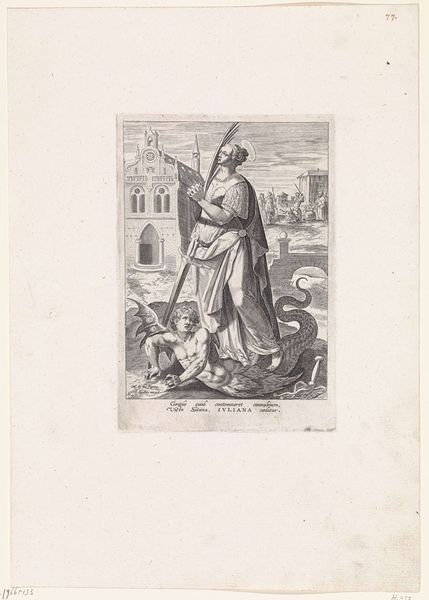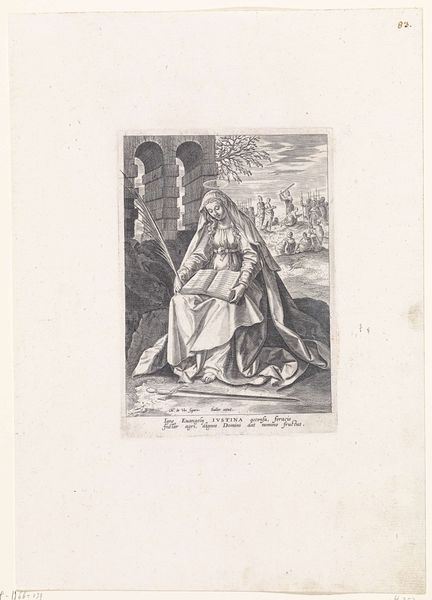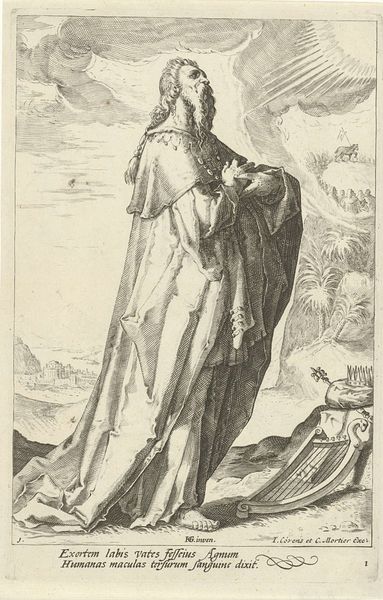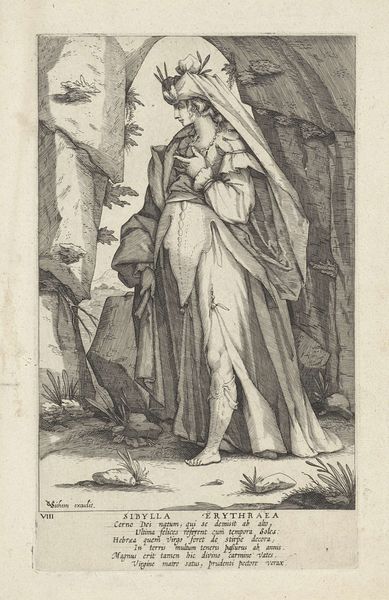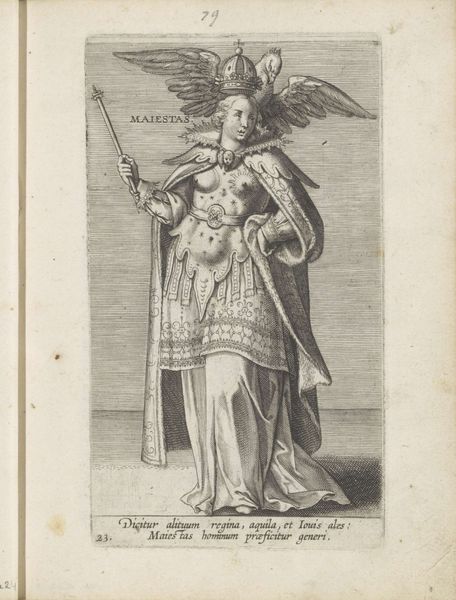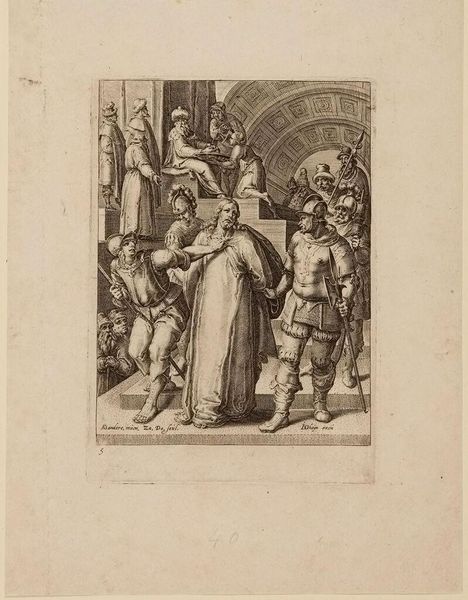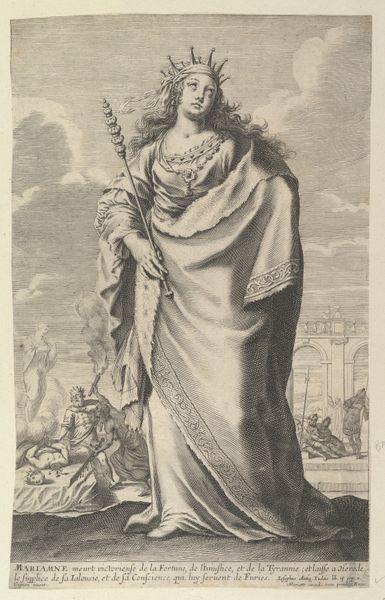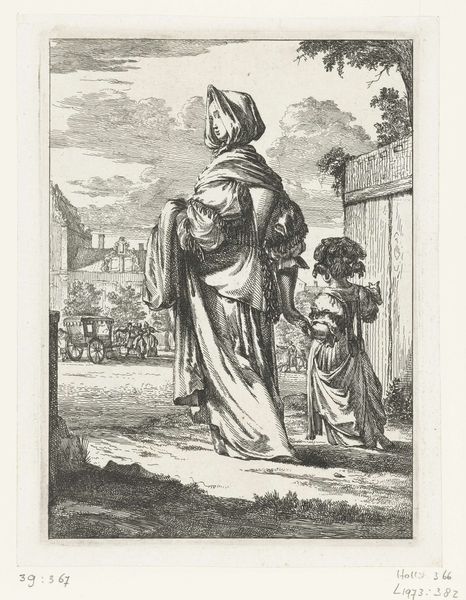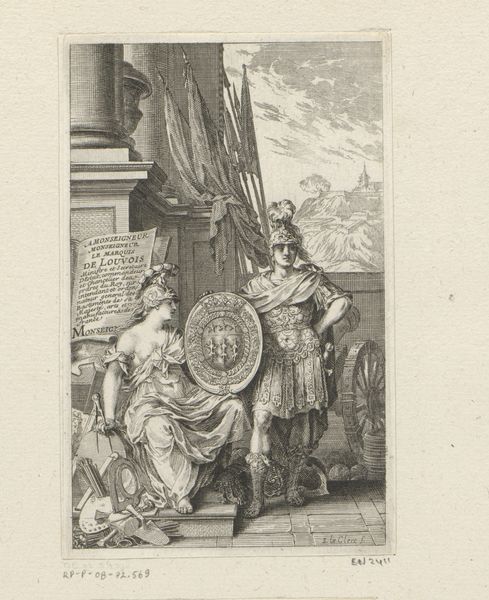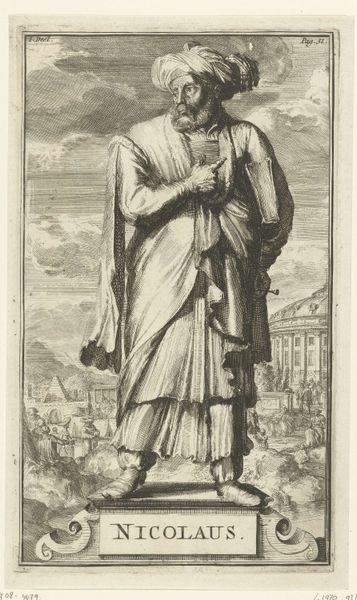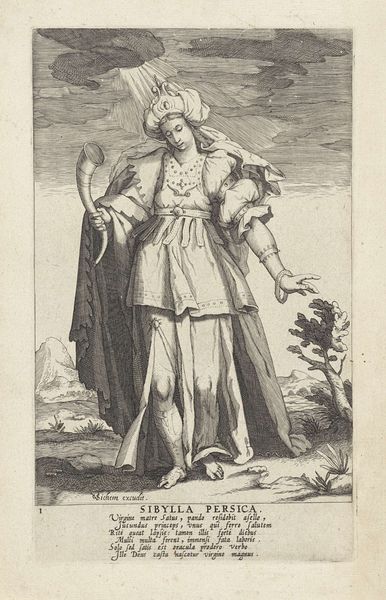
print, engraving
#
medieval
#
ink paper printed
# print
#
old engraving style
#
history-painting
#
engraving
Dimensions: height 184 mm, width 129 mm
Copyright: Rijks Museum: Open Domain
Editor: This is Johann Sadeler's "Heilige Ursula," an engraving from between 1583 and 1587, now housed in the Rijksmuseum. The rendering feels really precise and detailed, though I find it somewhat static. What are your initial observations? Curator: Thank you. The composition certainly invites analysis. Note how the artist deploys line to articulate form and depth. Observe the contrast between the controlled lines used for Ursula herself and the chaotic density used to depict the massacre scene behind her. Do you see how this contrast impacts our understanding of the piece? Editor: It creates a really sharp visual distinction. Ursula, with her clean lines, is very clearly set apart from the implied violence around her. What do you make of the varying densities in the background, creating those stark contrasts? Curator: Precisely. These contrasting densities manipulate the viewers' eye. Note the architectural structure behind the Saint, seemingly solid, against which is posed this field of warring figures and beyond, still more structures. The structural relations contribute to the visual grammar through which meaning is communicated. Editor: So it's like the technique itself helps us understand the values being presented, that dichotomy? Curator: Yes, the visual syntax shapes how we perceive the narrative. This interplay of order and disorder is very intentional. How might the use of purely linear elements play into the intended viewing? Editor: I see what you mean. Studying the engraving purely as an aesthetic object and understanding how it was made really does illuminate the artist’s intentions. Thank you. Curator: Indeed. It invites a renewed appreciation for its structural and formal elements.
Comments
No comments
Be the first to comment and join the conversation on the ultimate creative platform.
